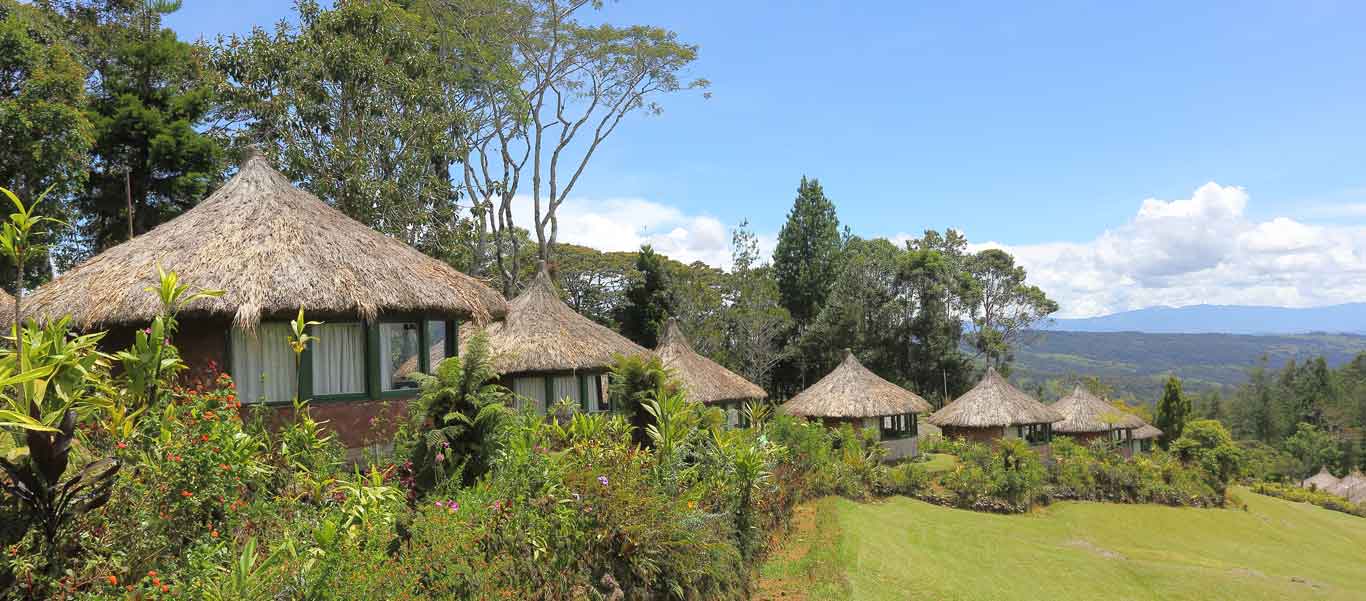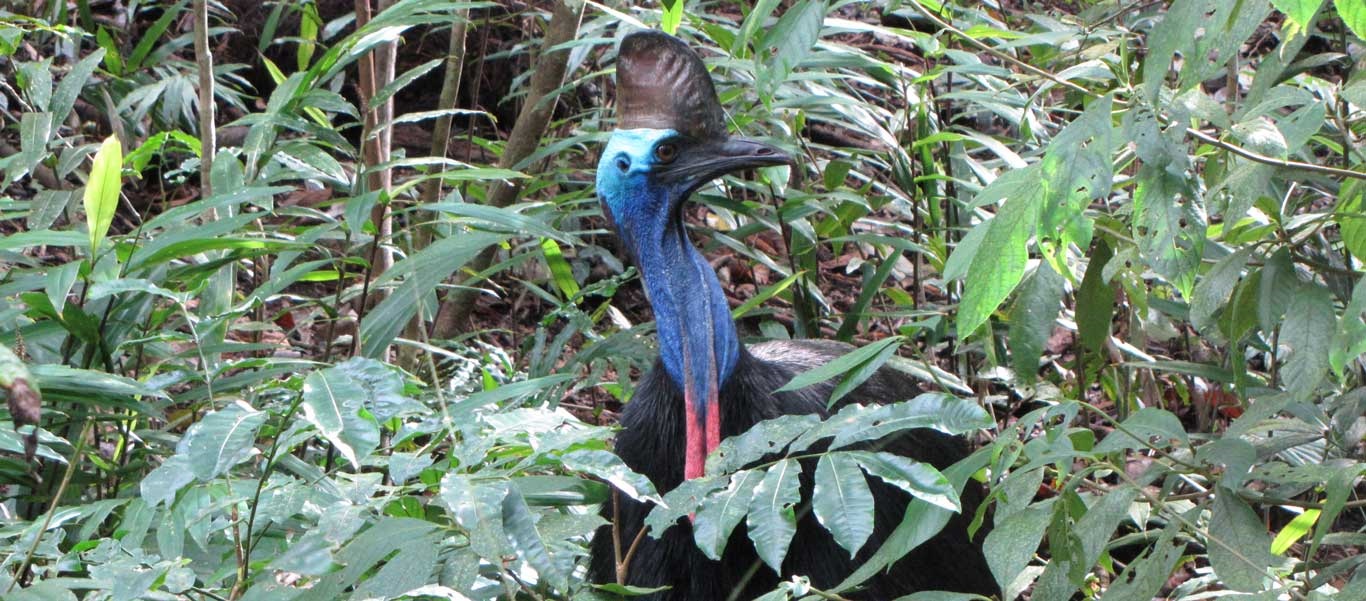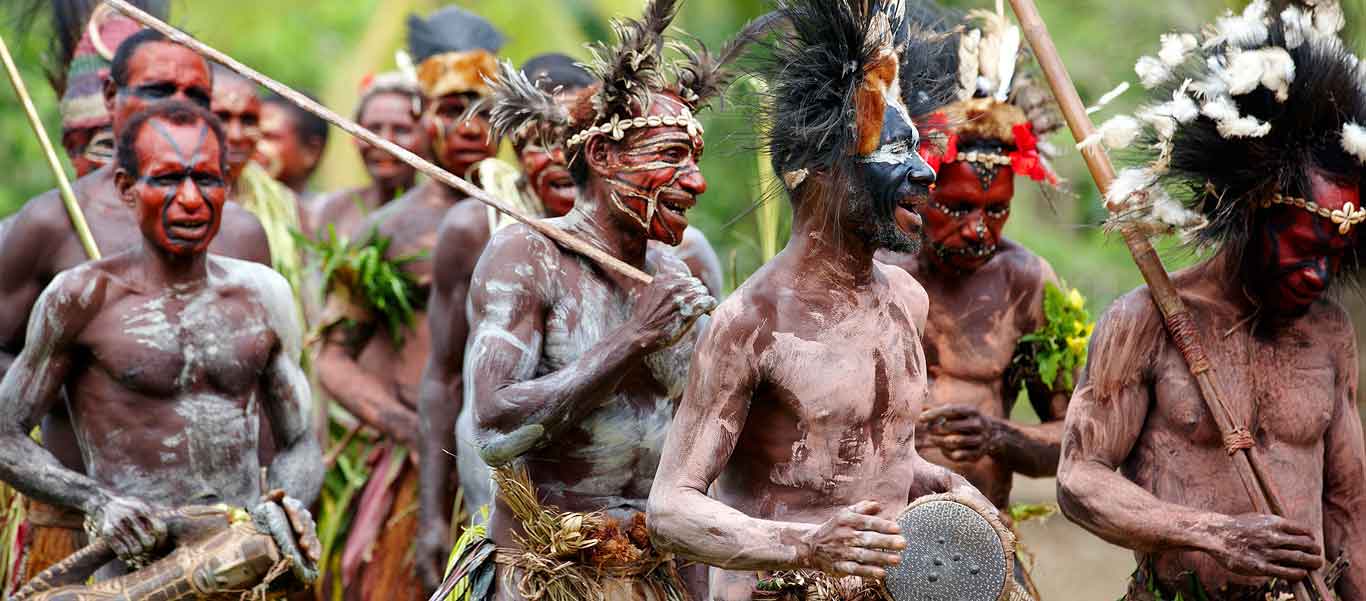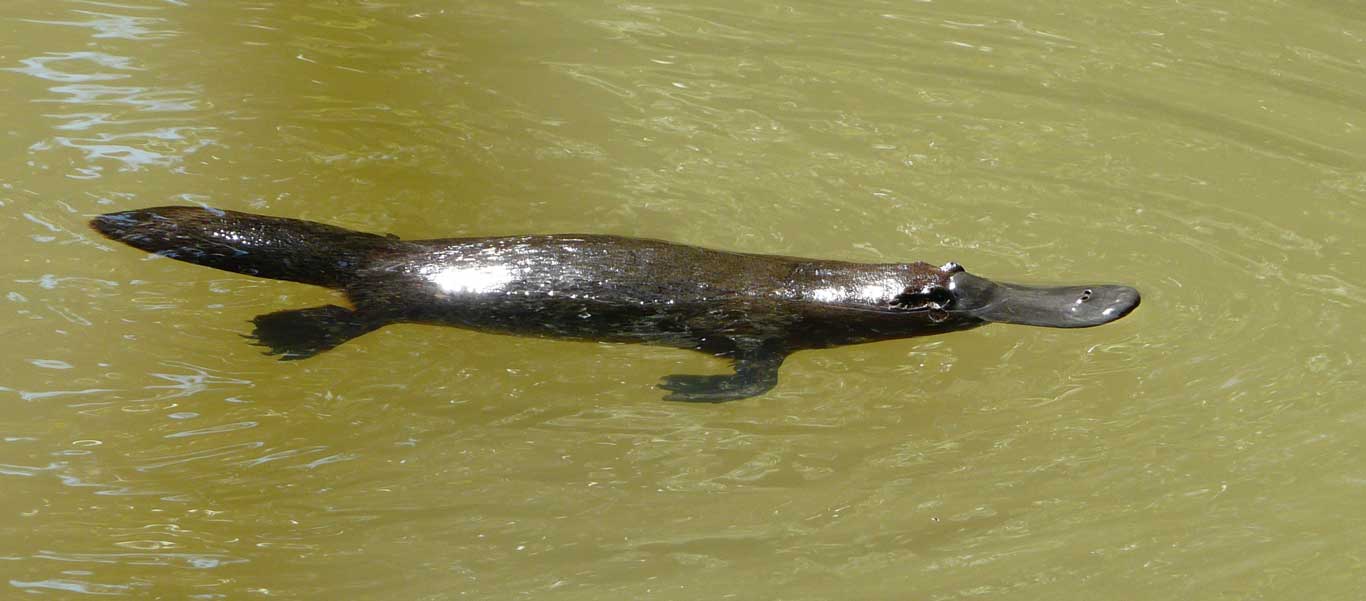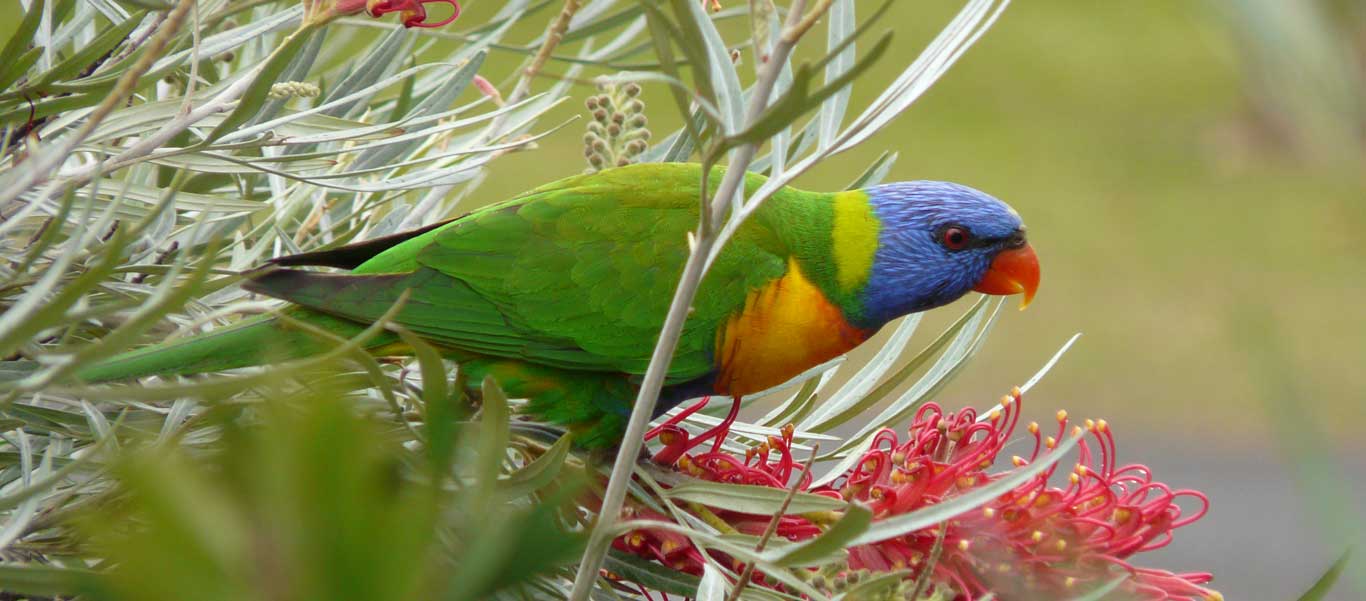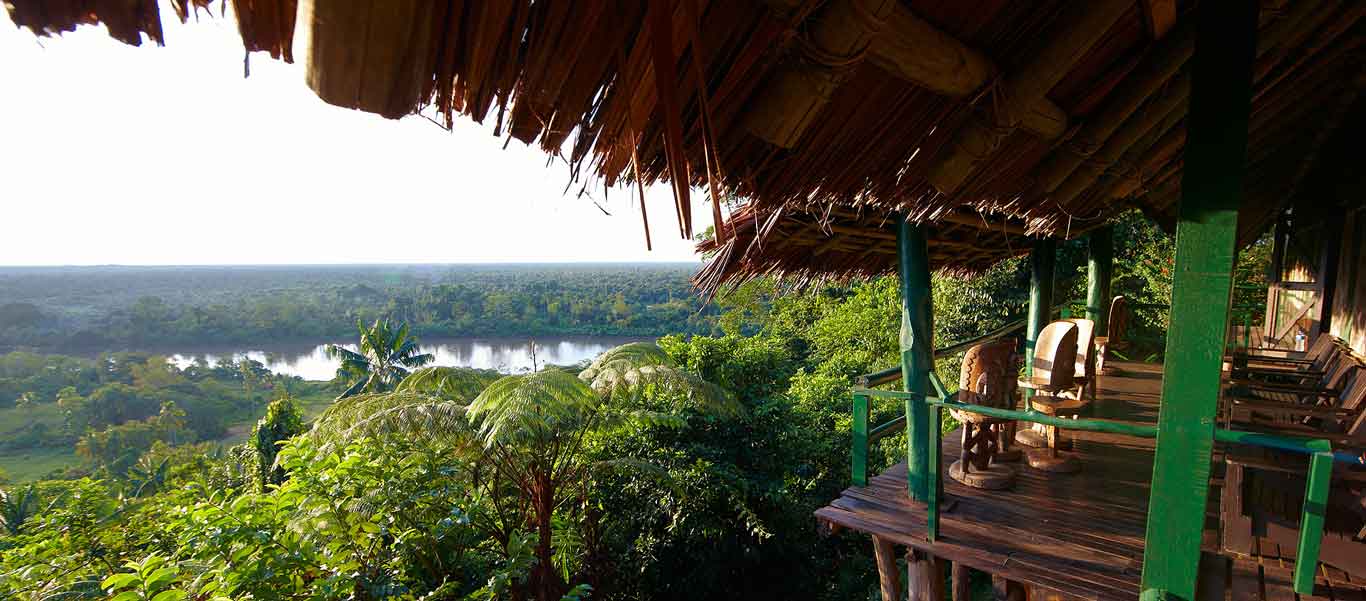Papua New Guinea & Australia
Culture and Wildlife of Papua New Guinea and Australia
From the fantastic to the bizarre, cultural and biological diversity is off the charts on this 18-day expedition to Papua New Guinea and Queensland, in northeast Australia. Linguistically the world’s most diverse country with 700 native tongues spoken, Papua New Guinea is one of the few remaining corners of the world where primeval tribal rituals continue to be practiced daily with vigor. Meet Huli Wigmen adorned with their human hair headpieces. Stroll among the villages of people in the Sepik Region who no longer headhunt, but value the art of body scarification. Prowl the forests for sightings of birds-of-paradise, renowned for their fantastic plumage and peculiar mating displays. In Australia’s Atherton Tableland, search for Platypus, tree-kangaroos and possums while our rainforest retreat in Lamington National Park offers over 160 species of subtropical birds. Let our expert naturalists guide you on this unique expedition that includes a plethora of species that are, in many cases, found nowhere else on Earth.

Destinations
- Travel by Air
- Travel by Road
- Travel by Boat
- Travel by Bullet Train
- Travel by Rail
- Travel by Dog Sled
- Day 1
- Day 2
- Day 3
- Day 4
- Day 5
- Day 6
- Days 7 & 8
- Day 9
- Days 10 & 11
- Day 12
- Day 13
- Day 14
- Day 15
- Day 16
- Day 17
- Day 18
-
Wednesday, May 17: Arrive Port Moresby
Arrive in Port Moresby, capital of Papua New Guinea, and transfer to the hotel. Join fellow travelers and Apex Expedition leaders for a welcome dinner and briefing this evening. Overnight at Airways Hotel.
-
Thursday, May 18: Port Moresby / Mount Hagen
After breakfast, return to the airport for the short flight to Mount Hagen in the Western Highlands province. After lunch, set out on an afternoon of exploration. At over 5,000 feet in the fertile Wahgi Valley, the Mount Hagen area was first settled about 50,000 years ago, yet it would not be until the early 1930s that its tribes had contact with the outside world. The region is renowned for cultivation, including coffee, tea and sweet potatoes, as well as its native artifacts such as drums, wooden carvings, and clay pottery. Often covered in mist, the montane forest surrounding Mount Hagen supports a diversity of plants and wildlife, from the arboreal marsupial tree-kangaroo, to the “if you build it she will come” bowerbird. Return to the hotel, with its manicured tropical gardens, for dinner. Overnight at Highlander Hotel.
-
Friday, May 19: Mount Hagen – Tumbuna Sing-sing
Today features a full-day excursion to experience the Tumbuna Sing-sing, a spectacular, spirited celebration of traditional culture with local tribes. Tumbuna means “ancestors” in the local language known as Tok Pisin. For the Tumbuna Sing-sing, tribes perform ancient tribal dances and stories, while wearing extravagant traditional dress. This is an intimate encounter with the other-worldly ritual, arresting visual spectacle and mesmerizing rhythms that reflect the pasin bilong tumbuna—the way of the ancestors. Overnight at Highlander Hotel.
-
Saturday, May 20: Mount Hagen / Kumul Lodge
After breakfast, travel up the Highland Highway to Kumul Lodge. Located at 8,585 feet, the lodge and its environs offer exceptional montane New Guinea birding. Spend the afternoon and evening on birding excursions, orchid walks, frog and insect watching, and, if the skies allow, star gazing. You might also choose to stay on the lodge grounds to see what comes to the bird feeders, which draw the likes of the Ribbon-tailed Astrapia, Brehm’s Tiger Parrot, Smoky Honeyeater, Belford’s Melidectes and Island Thrush.
Overnight at Kumul Lodge, a locally owned and managed eco-lodge. Constructed of local materials and decorated with bright textiles with traditional patterns, the lodge offers a comfortable look and feel that authentically reflects the natural and cultural fabric of the region.
-
Sunday, May 21: Kumul Lodge
A good trail system surrounds the lodge and, in this region, slight changes in elevation help to determine what plants and animals—especially birds—are typically found there. Over one hundred birds have been recorded on the property of Kumul Lodge, including three birds-of-paradise. In the moss forest around the lodge you can see the Crested Satinbird, Chestnut Forest Rail, Lesser Melampitta and, if you’re lucky, a New Guinea Woodcock. After dusk, look for the bizarre Mountain Owlet-nightjar. Activity options will allow you to get up close and personal with the plants and animals that live here. Overnight at Kumul Lodge.
-
Monday, May 22: Kumul Lodge / Karawari Lodge
Following breakfast, travel down the Highlands Highway to Mount Hagens’ Kagamuga Airport for your charter flight to the private Karawari airstrip in the Sepik region. Transfer by riverboat to Karawari Lodge. Spend your time exploring the forests and villages, and probing the jungle-fringed waterways of the Karawari River.
Overnight at Karawari Lodge. The lodge design was inspired by local architecture using traditional materials. Perched on a ridge above its namesake river, it offers a spectacular view over miles of dense tropical jungle.
-
Tuesday & Wednesday, May 23 & 24: Karawari Lodge
Daily excursions will be planned to make the most of your time in this remote region, rich in natural and cultural diversity. The people here live truly “off the grid”. The lowland tropical rainforest in this region is among the most complex and diverse on Earth. Orchids abound. The elusive Twelve-wired Bird-of-paradise is among the astonishing number of birds—almost 230—recorded in the region, the list of which includes cockatoos, parrots, hornbills, herons, and other water birds.
Just as varied as the flora and wildlife is the over 250 different languages spoken by local tribes. Despite linguistic hurdles, the people of the Sepik region are bound by a defined system of trade and cultural interaction. Each village displays its own unique flare in its wood carvings, drums, and other artistic affectations. Along the river, men stand as they paddle dugout canoes on trading missions. Women fish using woven baskets. Boys attend rituals in the village men’s house to become men themselves. Elaborate body scarification is actively practiced, as was, until recently, cannibalism and headhunting. Overnight at Karawari Lodge.
-
Thursday, May 25: Karawari Lodge / Tari / Ambua Lodge
After an early breakfast, transfer by river boat to the Karawari Airstrip for your charter flight over impressively rugged terrain to Tari. Lodge vehicles will meet you to provide the 45-minute transfer along a winding unpaved road to Ambua Lodge, your home for the next three nights. Award-winning and eco-friendly, the lodge is situated on a hillside at almost 7,000 feet, offering spectacular views of the Tari Valley and surrounding peaks.
Spend the afternoon exploring the forest paths around the lodge with your Apex expedition leaders and lodge guides. Punctuated by roaring waterfalls, the forest will reward sharp eyes with a variety of orchid species, as well as myriad birds and other wildlife. Crossing the traditional vine bridges during your wanderings may help to foster a sense of appreciation for the close relationship between nature and the Huli people, who you will meet during your time here. Dinner and overnight at Ambua Lodge. Ambua is the Huli word for the yellow clay that is used, along with red ocher, to cover the faces of warriors to distinguish them from the rest of the clan members.
-
Friday & Saturday: May 26 & 27: Ambua Lodge
Choose to start each day with optional pre-breakfast birding. Around 217 bird species have been recorded in the area, including 13 different birds-of-paradise. As they are renowned for their extravagant plumage and fabulously bizarre displays, the chance to see such legendary creatures as King of Saxony Bird-of-paradise, Stephanie’s Astrapia and Brown Sicklebill provides good incentive for rising early.
One of the largest cultural groups in the country, the Huli have lived in the Tari Valley for over 1,000 years and have an elaborate kinship system. The importance of clan and tribal loyalties and traditions is ever present in the lives of these people, in which men still gauge their success in terms of the number of pigs, wives and amount of land owned. On daily excursions into the valley, you will visit Huli compounds and sacred places, and learn how they live and interact with each other and their environs. A highlight for many travelers is time spent with the Huli Wigmen, a clan renowned for wearing elaborate headdresses made of woven human hair and bundles of feathers. Young men apprentice under wig masters to learn the skills and dance rituals associated with creating and wearing these headpieces. With encroaching pressures of the modern world, it is unclear how long this fascinating practice will continue. Dinners and overnights at Ambua Lodge.
-
Sunday, May 28: Ambua Lodge / Tari / Port Moresby / Cairns
After breakfast, depart for the Tari airport for your flight to Port Moresby. Have lunch at the Airways Hotel before boarding your flight to Cairns, Australia. Upon clearing customs and immigration, transfer to the hotel, which overlooks the marina on the waterfront. Dinner and overnight at the Shangri-La Hotel.
-
Monday, May 29: Cairns / Atherton Tableland
This morning, depart by bus for adventures in the Atherton Tableland. En route, stop to view Agile Wallabies, a medium-sized kangaroo as skilled at swimming as it is hopping. Also keep a sharp eye out for birds, such as the Bush Stone-curlew and Double-eyed Fig-Parrot. Once through the cane-growing lowlands, begin to climb the Gillies Range onto the Atherton Tableland, a fertile plateau offering a mix of rainforest, wetlands and savanna. Stop at Lake Barrine, the largest lake in the area, formed by rainwater collecting in an ancient volcanic crater. Enjoy lunch, take a short walk in the rainforest among the huge trees, and cruise the lake to spot wildlife such as eels, chelid turtles, Pacific Black Duck, monitor lizards, Eastern Water Dragon, or even large Carpet Pythons. Just outside Yangaburra, stop to admire the massive Curtain Figtree, one of the largest trees in Northland Queensland. Spend a short time exploring Malanda, the tin and copper mining town turned dairy capital of the region. Continue on to the Rose Gums Wilderness Retreat. Sleep in luxurious, handcrafted pole and timber treehouses, tucked into the Wet Tropics rainforest canopy. “Rose gum” is the common name for the Eucalyptus grandis, a very tall, fast-growing forest tree found along the ridges of the property. Dinner and overnight at Rose Gums Wilderness Retreat.
-
Tuesday, May 30: Atherton Tableland
Start the day with an optional birding excursion on the grounds and tracks around the lodge, where a few hours may yield as many as 50 of the 160 species of birds recorded at the lodge.
After breakfast, board the bus for a half-day exploration of the southern Atherton Tableland, elevation of which varies from 1,640 to 4,200 feet. Climb up through grazing lands to the little town of Millaa Millaa, with its myriad waterfalls surrounded by lush rainforest. This morning holds good potential for Platypus viewing. This semiaquatic, egg-laying mammal endemic to Eastern Australia (including Tasmania) perplexed early European naturalists who, upon receiving the first specimens collected, thought that the duck-billed, beaver-tailed, otter-footed mammal was a stitched-together hoax. After lunch at the Nerada Tea Plantation and the chance to see the Lumholtz’s Tree-Kangaroo, return to Rose Gums for a bit of leisure before afternoon and evening activities.
In the afternoon, travel through the agricultural central Tableland. You will have your choice of visiting the Tolga Bat Rescue and Research Center, where they treat injured and orphaned fruit bats, or spending time in a bird hide in a local swamp to see what waterfowl is out and about. After an early dinner at a country pub in Atherton, head up to the Mount Hypipamee crater to search the rainforest with spotlights for several species of Australian possums, including gliders. These marsupials possess a thin membrane between the forepaws and ankles which makes it possible for them to soar tremendous distances between trees. Return to Rose Gums Wilderness Retreat for the night.
-
Wednesday, May 31: Atherton Tableland / Cairns
Enjoy the birds around the lodge feeders before breakfast and keep watch for a Hypsi or two, the most primitive of all living kangaroos and endemic to the Wet Tropics. After breakfast, continue exploring the highlights of the region as you make your way back to Cairns. At Granite Gorge Nature Park, get very close to wild, yet habituated, Mareeba Rock Wallabies. As you walk among the granite boulders looking for birds, you may also see a Frill-necked Lizard, which unfurls a broad ruff of skin when startled, courting or defending its territory. Stop for lunch at Kuranda, known as the “Village in the Rainforest”, which offers various attractions, such as a butterfly farm, venom zoo and market. Before descending the escarpment to the coastal plain, take in Barron Falls, a multi-tiered cascading waterfall on the Barron River. Dinner and overnight at the Shangri-La Hotel.
-
Thursday, June 1: Cairns / Brisbane / Lamington National Park
Depart the hotel for your morning flight from Cairns to Brisbane. Upon arrival, you’ll travel through the Gold Coast hinterland, an area of parks, forests, mountains and vineyards en route to O’Reilly’s Rainforest Retreat, nestled in the heart of Lamington National Park. Located at nearly 3,000 feet on its namesake plateau of the McPherson Range, the park protects one of the most diverse areas of vegetation in Australia, including one of the largest upland subtropical rainforest remnants in the world and the most northern Antarctic beech cool temperate rainforests in the country. Overnight at O’Reilly’s Rainforest Retreat, a presence in the area for over 100 years. O’Reilly men were farming in the McPherson Range when the national park was established around their land in 1915. The family decided to create the guesthouse, which has grown in polish and popularity ever since.
-
Friday, June 2: Lamington National Park
Over 160 species of subtropical birds have been recorded in the area around O’Reilly’s. Some, like the Crimson Rosellas and King Parrots will make themselves obvious to you, especially if you’re carrying food. The feeding trays by the dining room attract the likes of Regent and Satin Bowerbirds, and Green Catbirds. Common garden birds include Lewin’s Honeyeaters, Eastern Spinebills and Superb Fairy-wrens. Other wildlife species visible in the national park include the Red-necked Pademelon and Koala, as well as smaller creatures like the Rainforest Cool-skink and various species of frogs.
Spend the day investigating the area around the guesthouse and national park. Your Apex expedition leaders will let you know your options, which include activities like bushwalking the myriad tracks, birding and other outings of varying lengths and activity levels. Dinner and overnight at O’Reilly’s Rainforest Retreat.
-
Saturday, June 3: Lamington National Park / Brisbane
Depart early this morning for the transfer to Brisbane for your independent, international flights home.


